Physical Address
304 North Cardinal St.
Dorchester Center, MA 02124
Physical Address
304 North Cardinal St.
Dorchester Center, MA 02124


Artificial intelligence (AI) has taken the tech industry to a whole new level in recent years. The ability of computers to learn from experience and improve their performance without human intervention has led businesses across different industries to leverage the benefits of AI. With the right AI tools on hand, companies can accelerate their digital transformation journey and make smarter business decisions. In this blog post, we’ll explore the best AI tools available today that can help businesses of all sizes.
TensorFlow is an open-source software library developed by Google Brain Team that allows users to build, train, and deploy machine learning models. The library supports computation across multiple CPUs and GPUs, making it exceptionally versatile for any project. TensorFlow supports Python, C++, and Java programming languages and is flexible enough to work with any platform, including web, mobile, and desktop.
TensorFlow has become popular because of its ability to handle large-scale data models, which is crucial for many machine learning tasks. The framework has pre-built models for image classification, speech recognition, natural language processing, and other fields. TensorFlow’s advanced features and versatility have made it a popular choice for many businesses looking to take advantage of AI.
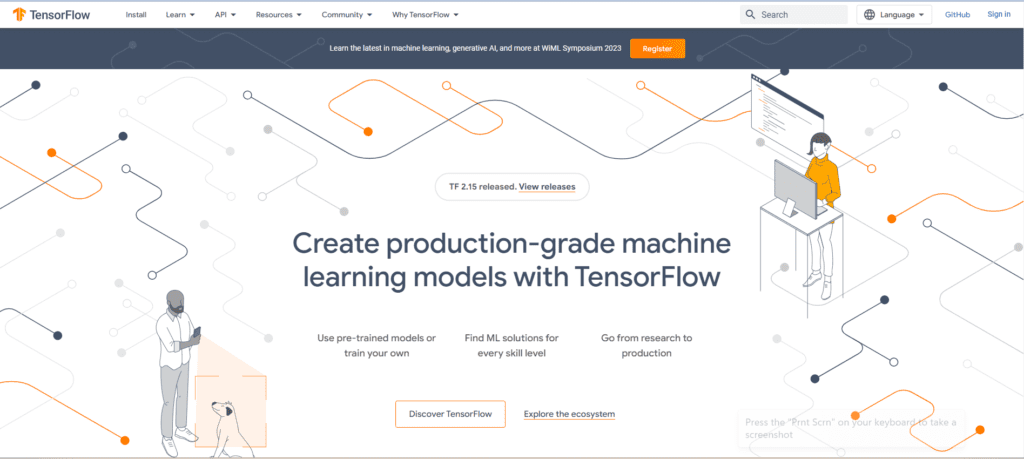

IBM Watson is a well-known and robust AI tool that is relied on by many companies. The platform provides a suite of services and tools to organizations spanning natural language processing, machine learning, chatbots, OCR, and prominent areas that impact businesses daily. Watson boasts highly advanced artificial intelligence, enabling businesses to automate complex tasks, process big data, and make sense of unstructured data.
IBM Watson also supports machine learning automation, which saves time in the development process. Watson’s cognitive APIs have enabled businesses to create virtual assistants and chatbots capable of handling complex service requests. With Watson, businesses can achieve efficiency, reduce operational costs, and better understand their customers.
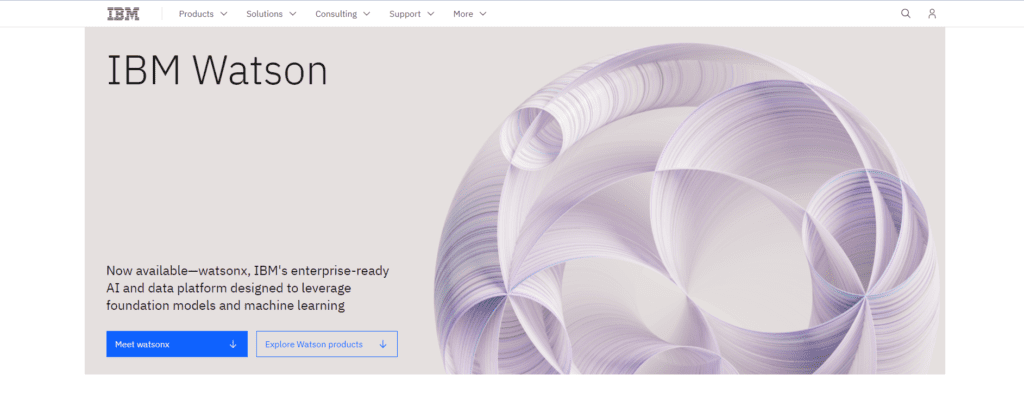

Amazon SageMaker is a comprehensive tool for building, training, and deploying machine learning models. It has pre-built models, and algorithms and provides the necessary tools to prepare data, visualize analytics and improve processes. SageMaker has become popular for its ease of use and compatibility with Amazon Web Services (AWS) infrastructure.
SageMaker simplifies the process of building machine learning models by offering various pre-built algorithms and functions. Companies can train their models and test them in the cloud without having to install any other software. Amazon SageMaker provides the necessary tools to build predictive models for vision, speech, natural language processing, and data analysis.
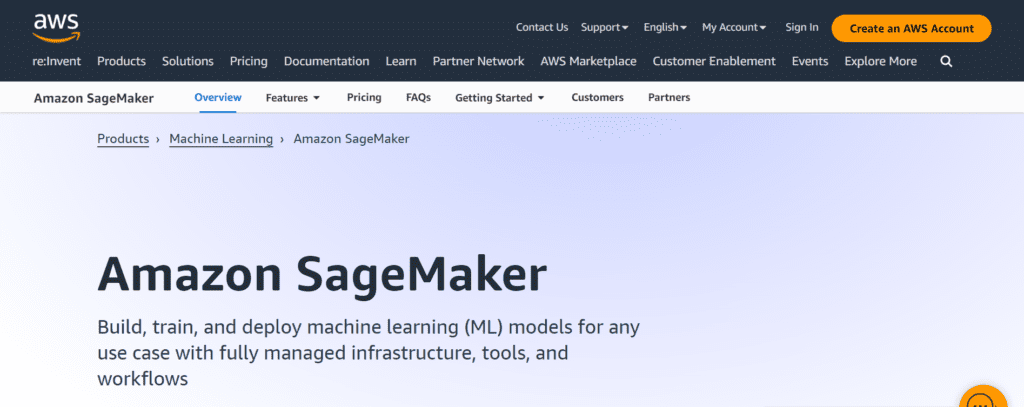

Microsoft Azure Machine Learning is a cloud-based service that allows businesses to develop, deploy and manage machine learning models. The platform is user-friendly, and its drag-and-drop interface helps users build models quickly. Azure Machine Learning has popular open-source tools like TensorFlow, sci-kit-learn, and Keras pre-installed, providing businesses with advanced capabilities.
Azure Machine Learning Studio has an extensive library of templates for various tasks like image and voice recognition, sales predictions and more. The service is cost-effective and offers flexible deployment options, depending on the needs of each company. Azure Machine Learning also provides access to several data services, which can help businesses store massive data sets for an extended period.
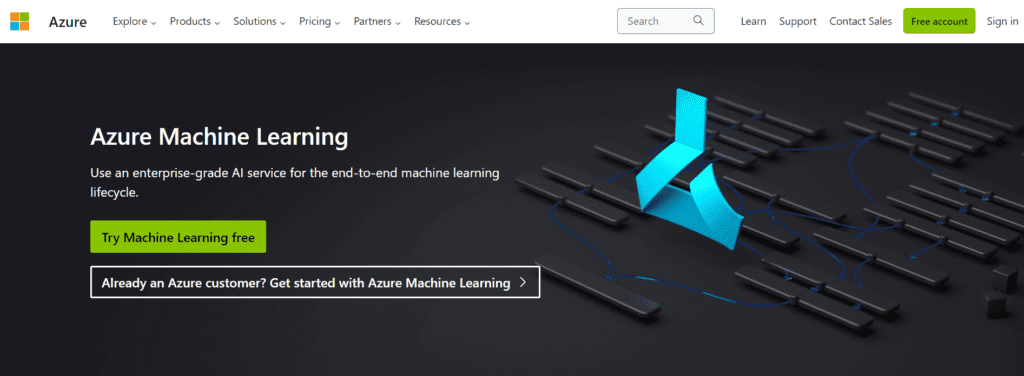

Hugging Face is an AI company specializing in natural language processing (NLP) tools. The company has become famous for its Transformer library, which has dozens of pre-built transformer models. These models are used in critical areas such as automatic summarization, question-answering, generating text, and translation.
Hugging Face is well-suited for businesses looking to simplify and improve NLP tasks. They provide ready-to-go language learning and processing technologies that organizations can use to derive valuable insights from their data. The company’s services are easy to integrate with existing tech stacks and allow for customization based on various parameters. Hugging Face is committed to open-source development, which means that their technology is continually improving and expanding.
Artificial intelligence has become a defining technology for many businesses worldwide. TensorFlow, IBM Watson, Amazon Sage Maker, Microsoft Azure Machine Learning, and Hugging Face are the best AI tools available for businesses. These tools are versatile and scalable, making them ideal for various use cases. They offer businesses the ability to automate processes, recognize patterns in complex data, and gain valuable insights to improve their decision-making processes. No matter what industry or size of a company, these AI tools can help accelerate digital transformation and increase efficiency.
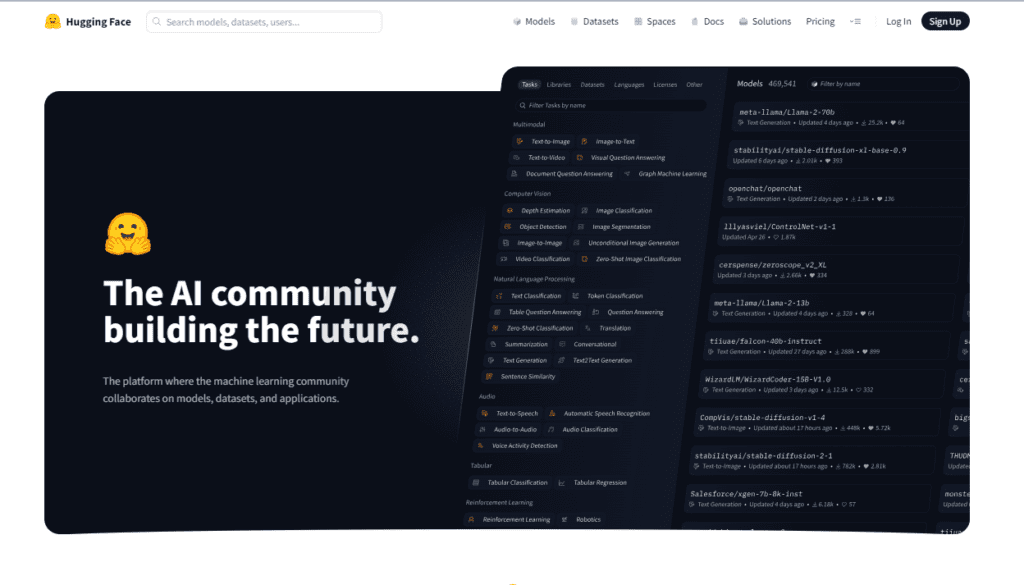

With the rise of technology, artificial intelligence (AI) has become a game-changer in almost every industry. One of the most significant benefits of AI is its ability to automate tasks and streamline workflows. AI tools can help increase efficiency, reduce errors, and save time in your day-to-day operations. From customer service and data analysis to project management and content creation, there are AI tools available to help you in every aspect of your workflow. In this blog post, we will be discussing some of the top AI tools that you can use to unlock efficiency and streamline your workflow, so you can focus on the bigger picture and achieve your business goals.
In today’s fast-paced and ever-evolving digital landscape, finding innovative ways to streamline workflow efficiency has become crucial for businesses to stay competitive. One of the most promising solutions to this challenge is the integration of AI tools into various aspects of daily operations.
Artificial intelligence, or AI, refers to the simulation of human intelligence in machines that are programmed to think and learn like humans. Leveraging AI tools can revolutionize the way businesses operate by automating repetitive tasks, reducing errors, and providing valuable insights to optimize workflow processes.
Whether you’re a small business owner or a team leader in a large corporation, incorporating AI tools into your workflow can unlock new levels of productivity and efficiency. These tools can range from intelligent virtual assistants that can handle customer inquiries to sophisticated data analytics platforms that can extract meaningful patterns and trends from vast amounts of data.
By harnessing the power of AI, businesses can free up valuable time and resources, allowing employees to focus on more strategic and creative tasks. Not only does this lead to increased productivity, but it also enables businesses to deliver better customer experiences, make data-driven decisions, and ultimately drive growth.
In this blog post, we will explore some of the top AI tools available today that can help streamline your workflow and unlock efficiency. From smart task management systems to advanced natural language processing algorithms, we’ll delve into the functionalities and benefits of these tools, providing you with actionable insights on how to integrate them into your business processes.
So, let’s dive into the world of AI tools and discover how they can revolutionize your workflow, boost productivity, and take your business to new heights of success.
Artificial Intelligence (AI) has revolutionized various industries, including streamlining workflows. By understanding the benefits of AI in this context, businesses can unlock incredible efficiency and productivity gains.
One of the key advantages of AI in workflow optimization is its ability to automate repetitive and time-consuming tasks. With AI-powered tools, businesses can offload mundane tasks to machines, freeing up valuable time for employees to focus on more strategic and creative work. This not only reduces the risk of errors but also enhances overall productivity.
AI tools can also analyze large volumes of data quickly and accurately, providing valuable insights and patterns that humans may overlook. This data-driven approach enables businesses to make informed decisions, identify bottlenecks, and optimize processes for maximum efficiency. By harnessing AI’s analytical capabilities, organizations can streamline workflows and make data-backed improvements.
Another benefit of AI in workflow optimization is its ability to enhance collaboration and communication. AI-powered chatbots and virtual assistants can assist employees by providing real-time information, answering queries, and even automating routine communication tasks. This facilitates seamless collaboration across teams, ensures consistent information flow, and minimizes delays in the workflow.
Furthermore, AI can help businesses predict demand, optimize inventory management, and streamline supply chain processes. With AI algorithms analyzing historical data and market trends, organizations can make accurate forecasts, reduce wastage, and ensure timely delivery of products or services.
Ultimately, embracing AI tools for workflow optimization empowers businesses to work smarter, not harder. By automating tasks, leveraging data insights, enhancing collaboration, and optimizing supply chain processes, organizations can unlock new levels of efficiency, cost-effectiveness, and competitiveness in their operations.


In today’s fast-paced digital world, leveraging the power of artificial intelligence (AI) can be a game-changer for streamlining your workflow. One area where AI truly shines is task automation. By automating repetitive and time-consuming tasks, you can free up valuable time and resources to focus on more strategic and high-value activities.
There are several top AI tools available that can revolutionize the way you work. One such tool is Zapier, a popular platform that connects various apps and allows you to automate workflows between them. With Zapier, you can effortlessly integrate different applications and set up triggers and actions to automate tasks such as data entry, file management, email notifications, and much more. Whether you’re a solopreneur or part of a large team, Zapier can help streamline your processes and boost productivity.
Another powerful AI tool for task automation is IFTTT (If This Then That). With IFTTT, you can create custom automation, or “applets,” that connect different devices, services, and applications. For instance, you can automate actions like saving email attachments to cloud storage, syncing data between platforms, posting social media updates, and even controlling your smart home devices. The possibilities are endless, and IFTTT empowers you to tailor automation to fit your specific needs and preferences.
When it comes to document-related tasks, AI-powered tools like DocuSign can be a game-changer. DocuSign enables you to automate the process of sending, signing, and managing documents electronically. This eliminates the need for printing, scanning, and manually handling paperwork, saving you time and reducing errors. With features like templates, reminders, and audit trails, DocuSign not only streamlines your workflow but also enhances security and compliance.
Lastly, chatbots are becoming increasingly prevalent in automating customer service and support tasks. AI-powered chatbots, such as those offered by platforms like LiveChat and Intercom, can handle routine inquiries, provide instant responses, and even escalate complex issues to human agents when necessary. By implementing chatbots, you can provide round-the-clock support, improve response times, and enhance customer satisfaction, all while reducing the workload on your support team.
Incorporating these top AI tools for task automation into your workflow can bring about significant efficiency gains. By harnessing the power of AI, you can eliminate manual processes, reduce human error, and optimize your productivity. Embrace the potential of AI and unlock a world of streamlined workflows and increased efficiency.
In today’s fast-paced digital landscape, businesses are constantly seeking ways to streamline their workflow and increase efficiency. One tool that has gained significant popularity in recent years is intelligent virtual assistants powered by artificial intelligence (AI).
Intelligent virtual assistants, also known as IVAs, are software programs that use AI technologies to simulate human-like interactions and provide assistance in various tasks. These virtual assistants can be integrated into existing systems, applications, or devices, making them accessible and adaptable to different business needs.
One of the key benefits of using intelligent virtual assistants is their ability to automate repetitive and time-consuming tasks. Whether it’s managing emails, scheduling appointments, or responding to customer queries, IVAs can handle these routine tasks with precision and efficiency. By offloading these responsibilities to virtual assistants, businesses can free up valuable time for their employees to focus on more strategic and creative endeavours.
Moreover, intelligent virtual assistants can also enhance customer experiences. With natural language processing capabilities, IVAs can understand and respond to customer inquiries, providing personalized and timely support. This not only improves customer satisfaction but also reduces the burden on customer service teams.
Furthermore, intelligent virtual assistants can learn and adapt over time, becoming more knowledgeable and efficient in their tasks. They can analyze data, identify patterns, and provide insights to help businesses make informed decisions. By leveraging AI technologies, IVAs can continuously improve their performance and contribute to overall productivity gains.
When considering implementing intelligent virtual assistants, it’s crucial to choose a solution that aligns with your specific business requirements. Factors to consider include integration capabilities, customization options, and scalability. Additionally, it’s important to ensure that the virtual assistant adheres to data privacy and security protocols to protect sensitive information.
In conclusion, intelligent virtual assistants offer a powerful solution for businesses looking to unlock efficiency and streamline their workflows. By leveraging AI technologies, these virtual assistants can automate tasks, enhance customer experiences, and provide valuable insights. As technology continues to advance, intelligent virtual assistants will play an increasingly significant role in driving productivity and innovation across various industries.
Robotic Process Automation (RPA) is revolutionizing the way businesses streamline their workflows and increase efficiency. With RPA, you can automate repetitive, rule-based tasks, freeing up valuable time for your employees to focus on more strategic and creative work.
Imagine a virtual workforce that can perform tasks with precision and accuracy, 24/7, without the need for breaks or vacations. That’s exactly what RPA offers. By utilizing software robots, RPA mimics human interactions with computer systems, enabling the automation of mundane and time-consuming tasks.
From data entry and invoice processing to generating reports and handling customer inquiries, RPA can handle a wide range of activities across various departments. The beauty of RPA lies in its ability to work seamlessly with existing systems and applications, eliminating the need for costly and time-consuming integration projects.
Moreover, RPA tools are designed to be user-friendly, allowing business users to easily create and deploy automation workflows without extensive coding knowledge. This empowers employees to take ownership of their work processes and make improvements as needed, without relying on IT teams or external developers.
Implementing RPA in your organization can result in significant time and cost savings. By automating repetitive tasks, you reduce human error and increase productivity. RPA also enables faster turnaround times, ensuring that critical processes are completed promptly.
Furthermore, RPA can enhance compliance and data security. By automating data entry and validation, you minimize the risk of manual errors and ensure data consistency. RPA also allows for strict access control and audit trails, providing a transparent and traceable workflow.
Overall, robotic process automation is a game-changer for businesses looking to unlock efficiency and streamline their workflows. By leveraging AI-powered tools, you can harness the power of automation to drive productivity, reduce costs, and empower your workforce to focus on high-value tasks. Embrace the future of work with RPA and take your organization to new heights.
Workflow management systems are powerful tools that can revolutionize the way you handle tasks and projects within your organization. These AI-powered platforms provide a centralized hub where you can streamline and automate various aspects of your workflow, ultimately increasing productivity and efficiency.
One of the key features of workflow management systems is task automation. Instead of manually assigning and tracking tasks, these systems can automatically allocate tasks to team members based on predefined rules and criteria. This not only saves time but ensures that tasks are assigned to the most suitable individuals, maximizing productivity and reducing the chances of errors or delays.
Moreover, workflow management systems offer comprehensive visibility into the progress of tasks and projects. With real-time updates and notifications, team members can easily track the status of their assigned tasks, collaborate with colleagues, and address any bottlenecks or roadblocks that may arise. This transparency promotes better communication and enables teams to work together seamlessly, even when members are geographically dispersed.
Another advantage of workflow management systems is their ability to integrate with other tools and applications commonly used in the workplace. From project management platforms to communication tools and cloud storage services, these systems can seamlessly connect different software solutions, eliminating the need for manual data entry and reducing the risk of errors or information silos.
Furthermore, AI-powered workflow management systems can analyze historical data and patterns to provide valuable insights and recommendations for process improvements. By leveraging machine learning algorithms, these systems can identify inefficiencies, bottlenecks, and areas for optimization within your workflow. This data-driven approach empowers organizations to continuously refine their processes, making them more streamlined and effective over time.
In conclusion, workflow management systems are indispensable tools for businesses looking to unlock efficiency and streamline their operations. With task automation, real-time visibility, seamless integration capabilities, and data-driven insights, these AI-powered platforms can significantly enhance productivity, collaboration, and overall workflow efficiency within your organization.
In today’s fast-paced digital landscape, harnessing the power of AI tools for data analysis and decision-making can be a game-changer in streamlining your workflow. These intelligent tools are designed to process vast amounts of information, identify patterns, and provide valuable insights that can drive informed decision-making.
One such tool is automated data analytics software. By leveraging advanced algorithms and machine learning capabilities, these tools can sift through large datasets in a fraction of the time it would take a human analyst. This not only saves valuable time but also ensures accuracy and consistency in data analysis. With the ability to uncover hidden trends, correlations, and outliers, AI-powered data analytics tools empower businesses to make data-driven decisions with confidence.
Another valuable AI tool in this realm is predictive analytics software. By utilizing historical data and statistical models, these tools can forecast future trends and outcomes. This can be particularly beneficial in areas such as sales forecasting, demand planning, and resource allocation. By leveraging predictive analytics, businesses can optimize their operations, minimize risks, and stay one step ahead of the competition.
Furthermore, natural language processing (NLP) tools are revolutionizing the way we extract insights from unstructured data sources such as customer reviews, social media posts, and news articles. These tools can analyze and understand human language, enabling businesses to gain valuable insights from textual data at scale. Whether it’s sentiment analysis to gauge customer opinions or extracting key information from a large volume of text, NLP-powered AI tools offer unprecedented efficiency and accuracy.
Lastly, decision support systems powered by AI are invaluable tools for complex decision-making processes. These systems analyze various factors, consider different scenarios, and provide recommendations based on predefined rules or machine learning algorithms. By harnessing the power of AI in decision-making, businesses can enhance their strategic planning, optimize resource allocation, and ultimately drive better outcomes.
In conclusion, utilizing AI tools for data analysis and decision-making can unlock unparalleled efficiency and effectiveness in your workflow. From automated data analytics and predictive analytics to natural language processing and decision support systems, these tools empower businesses to make more informed decisions, streamline processes, and gain a competitive edge in today’s data-driven world.


In today’s fast-paced business world, staying ahead of the competition requires more than just hard work. It demands smart strategies and efficient workflows that can adapt to ever-changing market demands. This is where the power of predictive analytics comes into play, revolutionizing the way businesses make data-driven decisions.
Imagine having the ability to accurately forecast customer behaviour, optimize inventory management, and identify potential risks and opportunities before they even arise. With predictive analytics, this becomes a reality. By harnessing the power of artificial intelligence (AI), businesses can leverage vast amounts of historical data to make accurate predictions and drive informed decision-making.
One of the key advantages of predictive analytics is its ability to uncover hidden patterns and trends within data. This allows businesses to gain deeper insights into customer preferences, enabling them to tailor their marketing strategies and product offerings to maximize customer satisfaction and boost sales. Moreover, predictive analytics can help identify potential bottlenecks in workflows, allowing businesses to streamline their operations and allocate resources more effectively.
Implementation of predictive analytics tools has become increasingly accessible, thanks to advancements in AI technology. From sophisticated machine learning algorithms to user-friendly software platforms, businesses of all sizes can now leverage the power of predictive analytics to unlock new levels of efficiency and productivity.
Whether you are in the retail, finance, healthcare, or any other industry, predictive analytics has the potential to transform your workflow. By harnessing the power of AI-driven insights, businesses can make proactive decisions, reduce operational costs, and stay one step ahead of the competition. So, if you’re looking to optimize your workflow and unlock efficiency, incorporating predictive analytics into your business strategy is a crucial step forward.
Natural language processing (NLP) is a branch of artificial intelligence that focuses on the interaction between computers and human language. It aims to enable computers to understand, interpret, and respond to natural language in a way that mimics human communication. In the context of streamlining workflows, NLP can play a crucial role in enhancing efficiency and productivity.
One of the key applications of NLP in workflow optimization is automated text analysis. By employing NLP-powered tools, businesses can extract valuable insights from large volumes of text data, such as customer feedback, social media conversations, or market research reports. These tools can analyze sentiment, identify key themes or topics, and even detect patterns or trends, providing businesses with actionable information to make informed decisions.
Another area where NLP can streamline workflows is in automating repetitive tasks. Chatbots and virtual assistants powered by NLP can handle customer inquiries, provide support, or even perform simple transactions, reducing the burden on human employees and allowing them to focus on more complex or strategic tasks. NLP can also be utilized to automate data entry, document processing, and information retrieval, saving time and minimizing errors.
Furthermore, NLP can assist in improving communication and collaboration within teams. Language translation tools powered by NLP can break down language barriers, allowing team members from different regions or linguistic backgrounds to communicate effectively. NLP-powered tools can also facilitate information sharing and knowledge management by automatically extracting relevant information from documents or conversations and making it easily accessible to team members.
In summary, leveraging natural language processing tools can significantly streamline workflows and boost overall efficiency. By automating tasks, extracting insights from textual data, and improving communication, businesses can unlock a new level of productivity and achieve their goals more effectively in the age of AI.
Machine learning algorithms have revolutionized the way businesses operate and streamline their workflows. These advanced AI tools can analyze vast amounts of data, learn from patterns, and make predictions or decisions with minimal human intervention. Incorporating machine learning algorithms into your workflow can greatly enhance efficiency and productivity.
One popular application of machine learning algorithms is in customer segmentation. By analyzing customer data such as purchasing behaviour, demographics, and online interactions, these algorithms can categorize customers into different segments based on their preferences and needs. This allows businesses to personalize their marketing strategies, tailor product recommendations, and ultimately improve customer satisfaction.
Another area where machine learning algorithms excel is in predictive analytics. These algorithms can analyze historical data and identify patterns or trends, enabling businesses to make accurate forecasts about future outcomes. Whether it’s predicting customer demand, optimizing inventory levels, or forecasting sales, machine learning algorithms can provide valuable insights that inform decision-making and optimize resource allocation.
Additionally, machine learning algorithms can be used for anomaly detection. By continuously monitoring data streams, these algorithms can identify unusual or suspicious patterns that may indicate fraud, security breaches, or system failures. This proactive approach allows businesses to take immediate action and mitigate potential risks before they escalate.
Implementing machine learning algorithms may seem daunting, but there are numerous AI tools available that make the process more accessible. Platforms like TensorFlow, sci-kit-learn, and PyTorch provide pre-built algorithms and libraries, allowing businesses to leverage machine learning capabilities without extensive programming knowledge.
In conclusion, machine learning algorithms are powerful tools that can unlock efficiency and streamline workflows. By leveraging these AI-driven technologies, businesses can gain valuable insights, automate processes, and make data-driven decisions. Embracing machine learning algorithms is a key step towards unlocking the full potential of AI and driving success in today’s fast-paced business landscape.
Collaboration is the key to success in today’s fast-paced and interconnected business world. With the advancements in artificial intelligence (AI), there are now powerful tools available that can enhance collaboration and streamline your workflow like never before.
One such tool is project management software powered by AI algorithms. These tools can help automate repetitive tasks, allocate resources efficiently, and provide real-time insights into project progress. With AI-driven project management tools, teams can collaborate seamlessly, assign tasks, and track deadlines effortlessly, resulting in improved productivity and streamlined workflows.
Another AI-powered tool that enhances collaboration is virtual meeting assistants. These intelligent assistants can schedule meetings, send reminders, and even transcribe meeting minutes. By automating these administrative tasks, teams can focus on the actual content of the meetings and engage in meaningful discussions, leading to more effective collaboration and faster decision-making.
AI-driven chatbots are also revolutionizing collaboration by providing instant support and information to team members. These intelligent chatbots can answer frequently asked questions, provide guidance, and even troubleshoot common issues. By leveraging AI chatbots, teams can access information and resolve queries promptly, eliminating bottlenecks and keeping the workflow smooth.
Furthermore, AI-powered document collaboration tools are transforming how teams work together on shared files. These tools enable simultaneous editing, version control, and smart suggestions, making it easier for multiple team members to contribute to a document in real time. With AI-enhanced document collaboration, teams can eliminate the back-and-forth of email attachments and experience a more streamlined and efficient workflow.
In conclusion, leveraging AI-powered tools for collaboration can significantly enhance productivity, streamline workflows, and foster effective teamwork. By adopting these innovative solutions, businesses can unlock new levels of efficiency and stay ahead in today’s rapidly evolving digital landscape.


In today’s fast-paced business environment, providing efficient customer support is essential for retaining customers and building a positive brand image. This is where chatbots come into play, revolutionizing the way businesses handle customer interactions.
Chatbots, powered by artificial intelligence (AI), have become increasingly popular due to their ability to streamline customer support processes. These virtual assistants are available 24/7 and can handle multiple customer queries simultaneously, ensuring a prompt response and eliminating the need for customers to wait in long queues or navigate complex phone menus.
One of the key advantages of using chatbots for customer support is their ability to provide instant solutions. By analyzing customer queries and leveraging machine learning algorithms, chatbots can accurately identify and address common issues without human intervention. This not only saves time but also enhances the overall customer experience by delivering quick and efficient support.
Moreover, chatbots can be seamlessly integrated into various communication channels, including websites, mobile apps, and social media platforms. This enables businesses to provide consistent and personalized support across multiple touchpoints, ensuring that customers receive the same level of assistance regardless of the platform they choose.
Additionally, chatbots can collect valuable data during customer interactions, offering businesses valuable insights into customer preferences, pain points, and frequently asked questions. This data can be used to improve products or services, optimize support processes, and identify trends or patterns that can inform future business strategies.
When implementing chatbots for customer support, it is crucial to strike the right balance between automation and human interaction. While chatbots can handle routine queries, complex or sensitive issues may require human intervention. By seamlessly transitioning between chatbots and human agents, businesses can ensure that customers receive the most appropriate and efficient support throughout their journey.
In conclusion, chatbots are powerful AI tools that can significantly streamline customer support processes, enhance efficiency, and improve the overall customer experience. By leveraging the capabilities of chatbots, businesses can unlock new levels of productivity, freeing up valuable time and resources to focus on other critical aspects of their operations.
Virtual meeting assistants are revolutionizing the way professionals conduct meetings and collaborate with team members. With the advent of artificial intelligence (AI), these virtual assistants have become indispensable tools for streamlining workflows and maximizing efficiency in the modern workplace.
Gone are the days of manually scheduling meetings, sending out invites, and managing calendars. Virtual meeting assistants powered by AI can seamlessly handle these tasks, allowing professionals to focus on more strategic and meaningful work. These intelligent assistants can automatically schedule meetings based on participants’ availability, send out invitations, and even handle follow-up reminders.
One of the key benefits of virtual meeting assistants is their ability to integrate with various communication platforms. Whether it’s emails, instant messaging apps, or project management tools, these assistants can synchronize information, ensuring everyone is on the same page. This eliminates the need for constant back-and-forth communication, saving precious time and reducing the risk of miscommunication.
Moreover, virtual meeting assistants can provide real-time transcription and note-taking during meetings. This not only helps participants stay engaged and focused but also ensures that important discussions and action items are accurately recorded. Gone are the days of scrambling to jot down notes or struggling to recall what was discussed during a meeting. With AI-powered assistants, all relevant information is readily available and easily accessible.
Another significant advantage of virtual meeting assistants is their ability to facilitate remote collaboration. With the rise of remote work and virtual teams, these assistants play a crucial role in bridging the gap between team members located in different geographical locations. They can help schedule virtual meetings, set up video conferences, and even integrate with collaborative platforms for seamless document sharing and real-time collaboration.
In summary, virtual meeting assistants powered by AI are invaluable tools for streamlining workflows and boosting efficiency in the modern workplace. From automating scheduling tasks to facilitating remote collaboration, these assistants simplify the meeting process and allow professionals to focus on more meaningful work. Embracing AI tools like virtual meeting assistants unlocks new levels of productivity and effectiveness, enabling businesses to thrive in today’s fast-paced and interconnected world.
Document collaboration and version control tools are essential for streamlining your workflow and ensuring efficient collaboration among team members. Gone are the days of constantly emailing back and forth, losing track of document versions, and struggling to keep everyone on the same page. With the power of AI, there are now advanced tools available that can revolutionize how you work on documents.
One popular AI-powered document collaboration tool is Google Docs. It allows multiple users to work on a document simultaneously, making real-time changes and updates that are instantly visible to all collaborators. This eliminates the need for tedious back-and-forth exchanges and ensures that everyone is always working on the latest version of the document. Additionally, Google Docs offers features such as comments and suggestions, allowing for seamless communication and feedback within the document itself.
Another notable tool is Microsoft Office 365, which includes applications like Word, Excel, and PowerPoint. These AI-driven tools offer robust collaboration features, including real-time co-authoring, where multiple users can work on a document simultaneously. Additionally, Office 365 provides version history, allowing you to easily track changes, compare different versions, and revert to previous versions if needed.
For those in the creative industry, Adobe Creative Cloud offers AI-powered collaboration and version control tools specifically designed for graphic designers, photographers, and video editors. With features like Creative Cloud Libraries, multiple team members can access and work on shared assets, ensuring consistency and efficiency in design projects. The version control capabilities in Adobe Creative Cloud allow you to easily manage different iterations of a project, keeping track of changes and simplifying collaboration.
In addition to these popular tools, there are numerous other AI-powered document collaboration and version control tools available, each with its own unique features and strengths. Depending on your specific needs and preferences, you can explore options such as Dropbox Paper, Quip, or Notion, among others.
By leveraging AI-powered document collaboration and version control tools, you can unlock incredible efficiency and productivity gains in your workflow. Say goodbye to document chaos and welcome streamlined collaboration, seamless communication, and improved version control, all thanks to the power of AI.
In today’s fast-paced business environment, efficiency is key to staying ahead of the competition. With the advancements in artificial intelligence (AI), there are now powerful tools available that can help streamline your workflow and optimize project management and task prioritization.
One such AI tool is project management software that utilizes machine learning algorithms to automatically allocate resources, track progress, and predict potential bottlenecks. These tools can analyze historical data, identify patterns, and make intelligent recommendations for project scheduling and resource allocation. By leveraging AI-powered project management tools, you can save time and effort in manual planning and ensure optimal utilization of your team’s skills and time.
Task prioritization is another area where AI tools can make a significant impact. With a multitude of tasks and deadlines to manage, it’s easy for important tasks to get buried in the noise. AI-powered task prioritization tools can analyze the urgency, importance, and dependencies of tasks, and provide intelligent recommendations on the order in which they should be tackled. By using these tools, you can ensure that your team is focusing on the most critical tasks and meeting deadlines efficiently.
Furthermore, AI tools can also help automate repetitive and mundane tasks, freeing up valuable time for your team to focus on more strategic and creative work. From automating data entry and report generation to handling customer queries and support, AI-powered tools can significantly reduce manual work and improve overall productivity.
By incorporating AI tools for project management and task prioritization into your workflow, you can unlock newfound efficiency and streamline your operations. These tools not only save time and effort but also enable you to make data-driven decisions, improve collaboration, and ultimately deliver projects more effectively. Embracing the power of AI in your workflow is a game-changer in today’s digital era.
AI-powered project management platforms are revolutionizing the way businesses handle their workflows. With their advanced algorithms and machine learning capabilities, these tools bring a new level of efficiency and organization to project management processes.
Gone are the days of manual task assignment and tracking. AI-powered project management platforms automate these processes, allowing managers to allocate resources, set deadlines, and monitor progress effortlessly. These tools use intelligent algorithms to analyze data and provide real-time insights, enabling teams to make data-driven decisions and adjust their strategies accordingly.
One of the key advantages of AI-powered project management platforms is their ability to predict and identify potential roadblocks or bottlenecks in a project. By analyzing historical data and patterns, these tools can anticipate challenges and suggest alternative approaches, helping teams stay on track and meet their deadlines.
Moreover, these platforms often come equipped with features such as smart scheduling, resource allocation optimization, and task prioritization. These AI-powered capabilities ensure that projects are assigned to the right team members, resources are utilized efficiently, and critical tasks are given priority, ultimately speeding up project delivery and enhancing overall productivity.
Collaboration is another area where AI-powered project management platforms excel. With integrated communication tools, teams can seamlessly share updates, exchange ideas, and collaborate in real time. This eliminates the need for constant back-and-forth emails and reduces miscommunication, fostering a more streamlined and cohesive working environment.
Furthermore, these platforms offer robust reporting and analytics functionalities. By collecting and analyzing project data, managers can gain valuable insights into team performance, resource utilization, and project outcomes. This data-driven approach enables organizations to identify areas for improvement, optimize workflows, and make informed decisions for future projects.
In conclusion, AI-powered project management platforms are revolutionizing the way businesses streamline their workflows. By automating tasks, providing intelligent insights, optimizing resource allocation, and facilitating seamless collaboration, these tools unlock efficiency and productivity, enabling teams to achieve their goals with greater ease and effectiveness.


When it comes to streamlining your workflow, task scheduling and prioritization algorithms powered by AI can be game-changers. These powerful tools can take the guesswork out of managing your to-do list and help you make the most efficient use of your time and resources.
Task scheduling algorithms use AI to analyze various factors such as task deadlines, dependencies, estimated completion times, and resource availability to create an optimized schedule. By considering these variables, the algorithm can automatically assign tasks to team members, allocate resources, and create a timeline that minimizes bottlenecks and maximizes productivity.
But it’s not just about scheduling tasks; prioritization algorithms can also help you determine which tasks should take precedence based on their importance, urgency, and impact on your overall goals. These algorithms leverage AI to analyze data such as task attributes, project objectives, and historical performance to provide intelligent recommendations on what tasks should be tackled first.
Implementing AI-powered task scheduling and prioritization algorithms can bring several benefits to your workflow. Firstly, it saves you time and effort by automating the tedious task of manually organizing and prioritizing tasks. It also ensures that you are making data-driven decisions, eliminating biases and subjective judgments. By optimizing the sequence of tasks and allocating resources effectively, you can minimize downtime, meet deadlines more consistently, and improve overall efficiency.
There are several AI tools available in the market that offer task scheduling and prioritization functionalities. Some popular options include Trello, Asana, and Monday.com, which employ AI algorithms to assist users in managing their tasks and optimizing their workflows. These tools provide intuitive interfaces, customizable features, and real-time updates, making them valuable assets for businesses of all sizes.
In conclusion, incorporating AI-powered task scheduling and prioritization algorithms into your workflow can unlock tremendous efficiency gains. By leveraging the power of AI, you can streamline your processes, make better use of your resources, and ultimately accomplish more in less time. So why not explore these AI tools today and take your productivity to new heights?
Case studies showcasing successful implementation of AI tools in workflow optimization provide valuable insights into the practical benefits of incorporating artificial intelligence into your business processes. These real-life examples highlight how organizations across various industries have unlocked efficiency and achieved remarkable results.
One such case study is Company XYZ, a global logistics company that faced challenges in managing their supply chain operations. By implementing an AI-powered predictive analytics tool, they were able to analyze historical data, identify patterns, and accurately forecast demand. This enabled them to optimize inventory levels, minimize stockouts, and reduce overall costs. As a result, Company XYZ experienced a significant increase in customer satisfaction and a substantial boost in their bottom line.
In another example, Company ABC, an e-commerce retailer, utilized an AI-driven chatbot to enhance its customer support services. By leveraging natural language processing and machine learning algorithms, the chatbot was able to handle a large volume of customer inquiries, provide instant responses, and even offer personalized recommendations. This not only reduced the workload on the customer support team but also improved response times and customer satisfaction rates.
Furthermore, the healthcare industry has witnessed the transformative impact of AI tools in workflow optimization. Hospital DEF implemented an AI-powered image recognition system that analyzed medical images to detect early signs of diseases such as cancer. This enabled the medical staff to make more accurate diagnoses and initiate timely treatments, ultimately saving lives and improving patient outcomes.
These case studies illustrate that the successful implementation of AI tools in workflow optimization can lead to tangible benefits, including increased productivity, cost savings, enhanced customer experiences, and improved decision-making. By learning from these real-world examples, businesses can gain valuable insights and inspiration to leverage AI technologies effectively in their operations.
In summary, case studies showcasing the successful implementation of AI tools in workflow optimization serve as powerful testimonials to the transformative potential of artificial intelligence. They demonstrate how businesses can unlock efficiency, streamline processes, and achieve remarkable results by embracing AI technology in their daily operations.
While AI tools have the potential to revolutionize and streamline workflows, it’s important to be aware of the challenges and considerations that come with adopting these technologies. Understanding these factors can help you make informed decisions and maximize the benefits of implementing AI tools in your workflow.
One of the key challenges is the initial investment required. AI tools can be costly to implement, especially if you opt for more advanced and specialized solutions. It’s crucial to carefully evaluate your budget and weigh the potential return on investment before committing to any AI tool. Conducting a cost-benefit analysis can help you determine whether the tool aligns with your business goals and justifies the expense.
Another consideration is the potential impact on your existing processes and workforce. Introducing AI tools may require redefining roles and responsibilities within your team. Some tasks that were previously performed manually may become automated, which could lead to job displacement or the need for upskilling and reskilling your employees. Proper planning and communication are essential to ensure a smooth transition and minimize any disruption.
Data privacy and security are also significant concerns when adopting AI tools. AI relies heavily on vast amounts of data for training models and making predictions. As a business, you must prioritize data protection and comply with relevant regulations. Consider the implications of storing sensitive customer information and implement robust security measures to safeguard data from unauthorized access or breaches.
Additionally, AI tools are not infallible and can produce errors or biased outcomes. It’s crucial to understand the limitations and biases that AI systems may have and regularly monitor and audit their performance. Being aware of these potential shortcomings will help you make more informed decisions and avoid any negative consequences.
Lastly, ongoing technical support and maintenance are vital for the successful adoption of AI tools. Ensure that you have access to reliable technical support and that the AI tool you choose receives regular updates and improvements. This will help address any issues that may arise and ensure the tool remains effective and up to date.
By acknowledging these challenges and considerations, you can approach the adoption of AI tools in a more informed and strategic manner. With proper planning and implementation, AI has the potential to greatly enhance your workflow efficiency and drive business success.
Integrating AI tools into your existing workflows can seem like a daunting task, but with the right approach, it can greatly streamline your processes and boost efficiency. Here are some steps to help you successfully integrate AI tools into your workflow:
1. Identify pain points: Start by identifying the areas in your workflow that could benefit from automation or enhanced decision-making capabilities. Look for tasks that are time-consuming, repetitive, or prone to human error. These are prime candidates for AI integration.
2. Research and select the right tools: There are numerous AI tools available in the market, each with its specific features and capabilities. Take the time to research and evaluate different options to find the tools that align with your workflow requirements. Look for tools that offer seamless integration, user-friendly interfaces, and robust support.
3. implementation plan: Before diving into implementation, create a detailed plan outlining the specific steps and resources required. Consider factors such as training needs, data requirements, and potential impact on team members. It’s crucial to have a clear roadmap to ensure a smooth integration process.
4. Start small and iterate: It’s often best to start with a pilot project or a smaller-scale implementation to test the effectiveness of the AI tool within your workflow. This allows you to identify any challenges or areas for improvement before scaling up. Gather feedback from users and stakeholders to fine-tune the implementation.
5. Train and educate your team: Ensure that your team members receive proper training on how to effectively use the AI tools integrated into the workflow. This will help them understand the benefits and functionalities of the tools, as well as alleviate any concerns or resistance to change. Ongoing education and support will empower your team to fully leverage the AI tools.
6. Monitor and evaluate performance: Regularly monitor and evaluate the performance of the AI tools within your workflow. Keep track of key metrics such as time saved, error reduction, and overall efficiency improvements. This data will help you measure the impact of the AI integration and make any necessary adjustments or refinements.
By following these steps, you can successfully integrate AI tools into your existing workflows, unlocking the full potential of automation and efficiency. Embrace the power of AI to streamline your processes, reduce manual work, and enhance decision-making, ultimately driving your organization towards greater success.
In conclusion, the use of AI tools has proven to be a game-changer in streamlining workflows across various industries. From automating mundane tasks to providing valuable insights and predictions, artificial intelligence has significantly improved efficiency and productivity.
Looking ahead, the prospects of AI in streamlining workflows are incredibly promising. As the technology continues to advance, we can expect even more sophisticated AI tools that can handle complex decision-making processes, identify patterns and trends more accurately, and adapt to evolving business needs.
One exciting area of development is the integration of AI with other emerging technologies such as machine learning, natural language processing, and robotics. This convergence has the potential to revolutionize how workflows are managed, offering unprecedented levels of automation and optimization.
Additionally, advancements in AI ethics and responsible AI practices will be crucial in ensuring the ethical and fair use of AI tools in streamlining workflows. As AI becomes more integrated into our daily lives, it is essential to prioritize transparency, accountability, and privacy to build trust and mitigate potential risks.
In conclusion, embracing AI tools for streamlining workflows can unlock tremendous efficiency gains and propel businesses forward. By leveraging the power of AI, organizations can focus on higher-value tasks, make data-driven decisions, and adapt quickly to changing market dynamics. The future of AI in workflow optimization is bright, and those who embrace it will undoubtedly stay ahead of the curve in this fast-paced digital era.
We hope you found our blog post on the top AI tools for streamlining your workflow insightful and informative. As technology continues to advance, incorporating AI tools into your workflow can greatly enhance efficiency and productivity. From intelligent virtual assistants to automated data analysis, the possibilities are endless. By utilizing these tools, you can unlock a new level of efficiency in your work and save valuable time and resources. So, why not embrace the power of AI and take your workflow to the next level? Start implementing these tools today and watch your productivity soar.